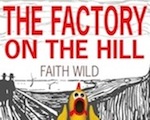Dust pollution from broiler sheds
Dust pollution
Dust is produced outside the sheds by vehicles entering and leaving the farm and inside the sheds by chicken activity and litter. Dust from inside the shed may be of more concern than outside dust as it consists of particles of organic and inorganic origin. The organic component consists of dried faecal matter, feathers, plant matter, bacteria, endotoxins and fungi. Endotoxins are toxins that are released from the cell wall of some bacteria when the bacteria die or disintegrate. In poultry operations, endotoxins originate from bacteria that can be found in faecal matter, urine, litter, grain and other vegetable matter in poultry feed.
Dust particles vary in size, shape, surface area and composition. Differentiation between particle size fractions is important in health studies in order to quantify penetration of dust within the respiratory system. Particles of similar size but different shape and density behave differently in air. Therefore, particles are classified by their mass median aerodynamic diameter (MMAD), which is a measure of density and shape. PM10 is particulate matter with MMAD of 10 micrometres or less; PM2.5 (also called fine particles) is 2.5 micrometres or less; PM1 (also called ultrafine particles) is 1 micrometre or less. Particulates in the 2.5-10 micrometre range also are described as coarse particulates.
Inhalation of fine inorganic dust (eg. soil) from poultry operations has the potential to impact on the health of susceptible individuals, for example those with existing respiratory conditions. Fine inorganic dust has the potential to exacerbate asthma symptoms and cause lung inflammation.
Inhalation of organic dust (eg. grain dust, allergens, and endotoxin) may produce a flu-like illness and breathing difficulties. The cause of these symptoms can be either a direct toxic effect of micro-organisms in the dust or an allergic reaction following repeated exposure. Diseases caused by organic dusts have only been reported in situations where there has been heavy and/or repeated occupational exposure to the dust. It is unlikely that nearby residents would be exposed to quantities of organic dust sufficient to cause symptoms, even on windy days. Nevertheless, precautions to minimise the quantities of dust generated by activities on the farm are advisable, as much to reduce nuisance effects as for health reasons.
Dust emissions
Recent monitoring studies undertaken through the Australian Poultry CRC measured dust emissions from tunnel ventilated meat chicken sheds in Queensland and Victoria (Dunlop et al. 2009b). Dust was measured at the fan and no attempt was made to measure or model the transport of this dust from the sheds. Dust has been found to carry odorants (Cai et al. 2006; Hammond et al. 1981; Heber et al. 1988).
Dust concentrations varied on a daily basis, throughout the batch cycle, and from farm to farm. In general, dust emission rates peaked on the measurement day prior to the first pickup. Dust concentrations in the exhaust air from meat chicken sheds were occasionally very high. In addition, poultry dust was composed of large numbers of fine particles (< 1 ?m). This implies that workers should wear appropriate dust masks (e.g. P2 Australian Standard or N95 USA Standard) at all times when working inside poultry sheds, especially for workers that consistently spend extended periods of time in a shed.
Dispersion and fate of emitted dust requires further research/modelling. Reference


